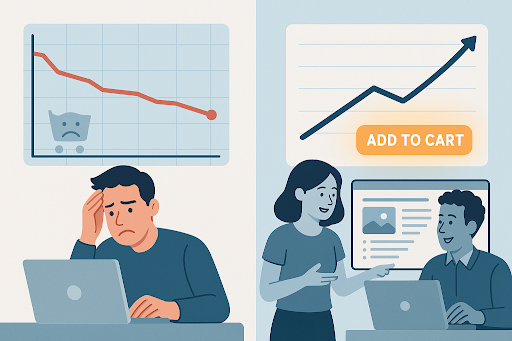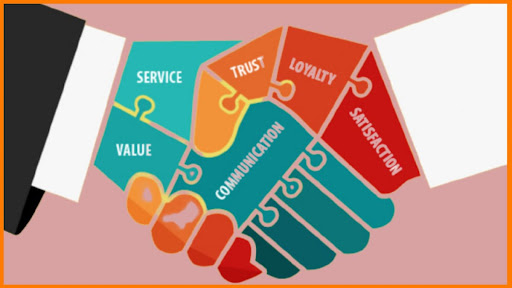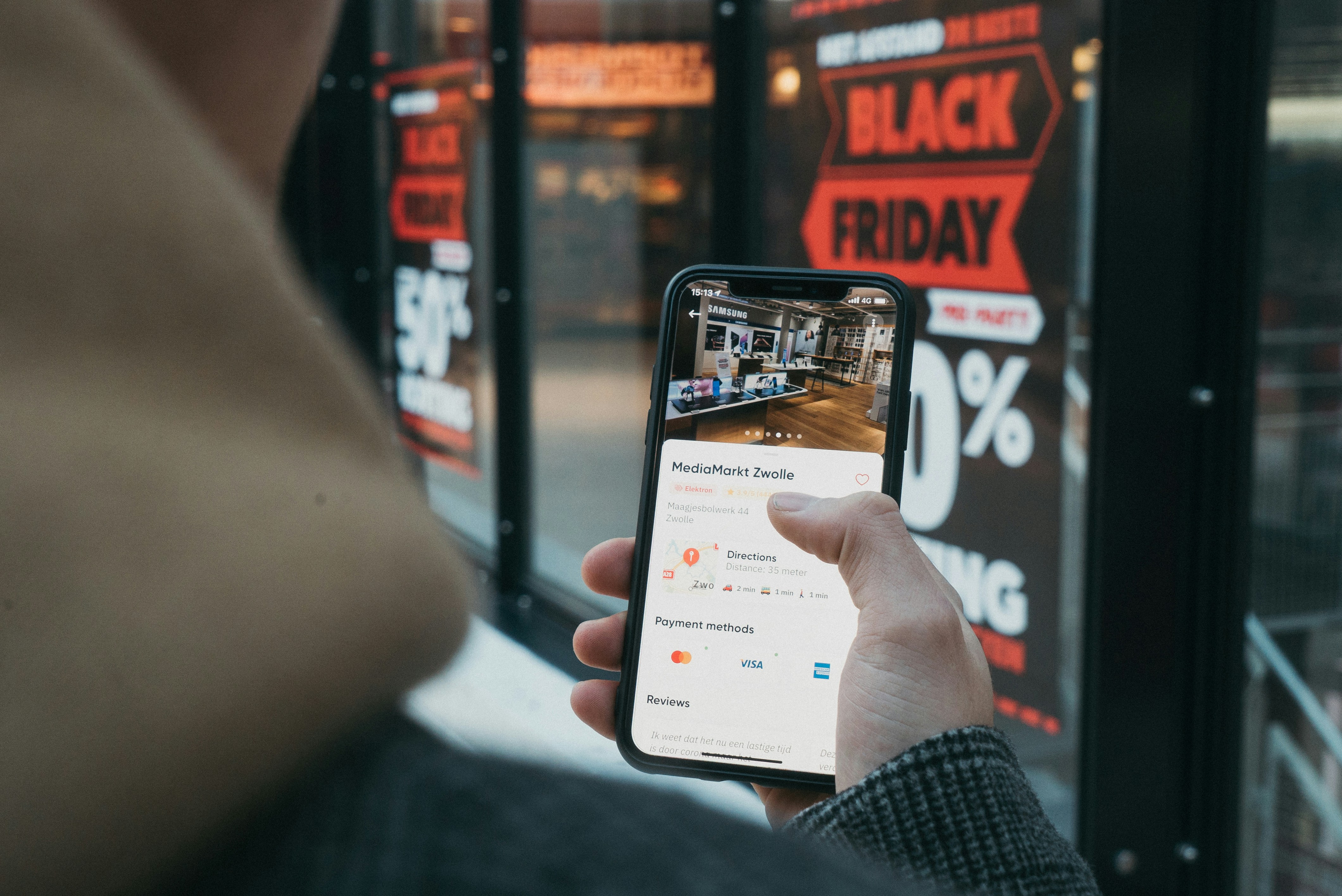
eCommerce Content That Converts: Why Your Blog Isn’t Driving Revenue (And How to Fix It Before The Q3 Sales Slump)
If Your Blog Isn’t Selling, It’s Just Taking Up Space
A well-optimized eCommerce blog should drive traffic, generate orders, and convert readers into buyers. Yet, many brands treat their blog as a content dumping ground—publishing generic posts that don’t rank, engage, or lead to revenue.
With Q3 sales being historically slower for many industries, now is the time to fix your content strategy before traffic (and revenue) takes a hit. Here’s why your blog isn’t performing—and how to turn it into a high-converting sales engine.

1. Your Content Isn’t Driving the Right Traffic
Not all traffic is created equal. If your blog attracts visitors who never buy, you’re focusing on the wrong keywords and topics.
🚨 The Problem:
- Writing content for broad, high-volume keywords instead of buyer-intent searches.
- Ignoring SEO optimization—weak meta descriptions, missing internal links, and poor readability.
- No clear product tie-ins—readers finish the article and bounce.
🔧 How to Fix It:
✅ Target transactional, long-tail keywords (“best performance exhaust for Mustang GT” > “performance exhaust guide”).
✅ Use structured internal linking to guide readers toward the related product pages where they can purchase.
✅ End every blog with a CTA (Buy Now, Get a Discount, Shop the Collection).
An UnFair Advantage: Use SEO tools like Ahrefs or SEMrush to find keywords that not only rank but convert—look for terms with high commercial intent (e.g., “best LED headlights for trucks”).
2. You’re Not Using Paid Search to Amplify Your Best Content
SEO takes time, and many brands leave revenue on the table by not running paid search campaigns to support their best-performing content.
🚨 The Problem:
- Relying only on organic traffic while competitors run ads to their content.
- Not using Google Performance Max or retargeting ads to promote high-converting articles.
- Missing out on Shopping Ads tie-ins (for blogs that showcase products).
🔧 How to Fix It:
✅ Use paid search for aftermarket brands—run ads to blog posts that answer buying questions.
✅ Test retargeting ads—if a user reads a buying guide, serve them a dynamic ad for related products.
✅ Boost high-performing blogs with PPC—especially on Google Discovery Ads and Facebook Ads.
An UnFair Advantage: Many auto parts brands only run PPC for product pages—but blog-driven ads can pull in top-of-funnel customers and move them into buying mode.
3. Your Blog Doesn’t Build Trust or Solve Problems
Customers don’t just want product specs—they want real-world solutions, expert advice, and social proof. If your content doesn’t address pain points or show why your product is the best choice, it won’t convert.
🚨 The Problem:
- Blog topics are too generic (“Why Car Mods Are Fun” won’t sell products).
- No social proof—reviews, case studies, and influencer endorsements.
- Lack of trust-building content, like side-by-side product comparisons or DIY install guides.

🔧 How to Fix It:
✅ Create expert-level content—in-depth, data-backed, and written by specialists.
✅ Include real customer testimonials or case studies within blog posts.
✅ Use comparison content—“Ceramic vs. Semi-Metallic Brake Pads: Which Is Better?”
An UnFair Advantage: People search Google for solutions, not sales pitches. Answer their specific problems, and they’ll trust your brand when it’s time to buy.
4. You’re Not Monetizing Your Blog With Shoppable Content
If a blog post drives traffic but doesn’t make it easy to buy, you’re missing revenue. Shoppable content is the missing link between education and conversion.
🚨 The Problem:
- Blog posts don’t feature products directly—they require extra clicks to find them.
- No buy now buttons, embedded product carousels, or clear CTAs.
- Missing affiliate or influencer content integrations.
🔧 How to Fix It:
✅ Embed product carousels & “Add to Cart” buttons in relevant blogs.
✅ Use interactive quizzes (e.g., “Find the Right Suspension Kit for Your Truck”).
✅ Partner with influencers & affiliates to create engaging, conversion-driven blog content.
An UnFair Advantage: Shoppable blog content can increase conversion rates by 25% or more—reduce friction by letting customers buy directly from the page.
🚀 How to Turn Your Blog Into a Revenue Machine
A blog shouldn’t just drive traffic—it should generate orders, move customers through the funnel, and boost sales.

Here’s the winning formula:
✅ SEO-driven, buyer-focused content (not just high-volume keywords)
✅ Paid search & retargeting ads to amplify your best posts
✅ Trust-building, solution-oriented articles that drive authority
✅ Shoppable content that removes friction and speeds up the path to purchase
Need expert help optimizing your eCommerce content strategy? UnFair Advantage helps brands turn blogs into conversion engines. Let’s make your content work smarter not harder—contact us today.
FAQ
How do I improve my blog’s SEO for eCommerce?
- Target transactional keywords (buyers searching for products, not just information).
- Optimize meta descriptions, internal links, and site speed.
- Use schema markup to enhance search visibility.
Should I use paid search to promote blog content?
- Yes! Paid search for aftermarket brands is underutilized for blogs.
- Use Google Discovery Ads & Performance Max to drive traffic to high-converting content.
- Retarget blog visitors with dynamic product ads.
How can I make my blog convert more readers into buyers?
- Embed shoppable elements—product carousels, CTAs, and interactive quizzes.
- Write solution-focused content—answer real customer problems.
- Use testimonials & social proof within posts.
What types of blog content work best for eCommerce?
- Comparison guides (e.g., “Best All-Terrain Tires for Winter Driving”).
- Installation & how-to articles (DIY-focused content).
- Expert reviews & product roundups with clear purchase links.
How do I measure if my blog is driving sales?
- Track conversion paths—see if blog readers are adding products to cart.
- Use UTMs & Google Analytics to measure traffic from blog posts to product pages.
- A/B test CTAs & shoppable elements to optimize conversion rates.

